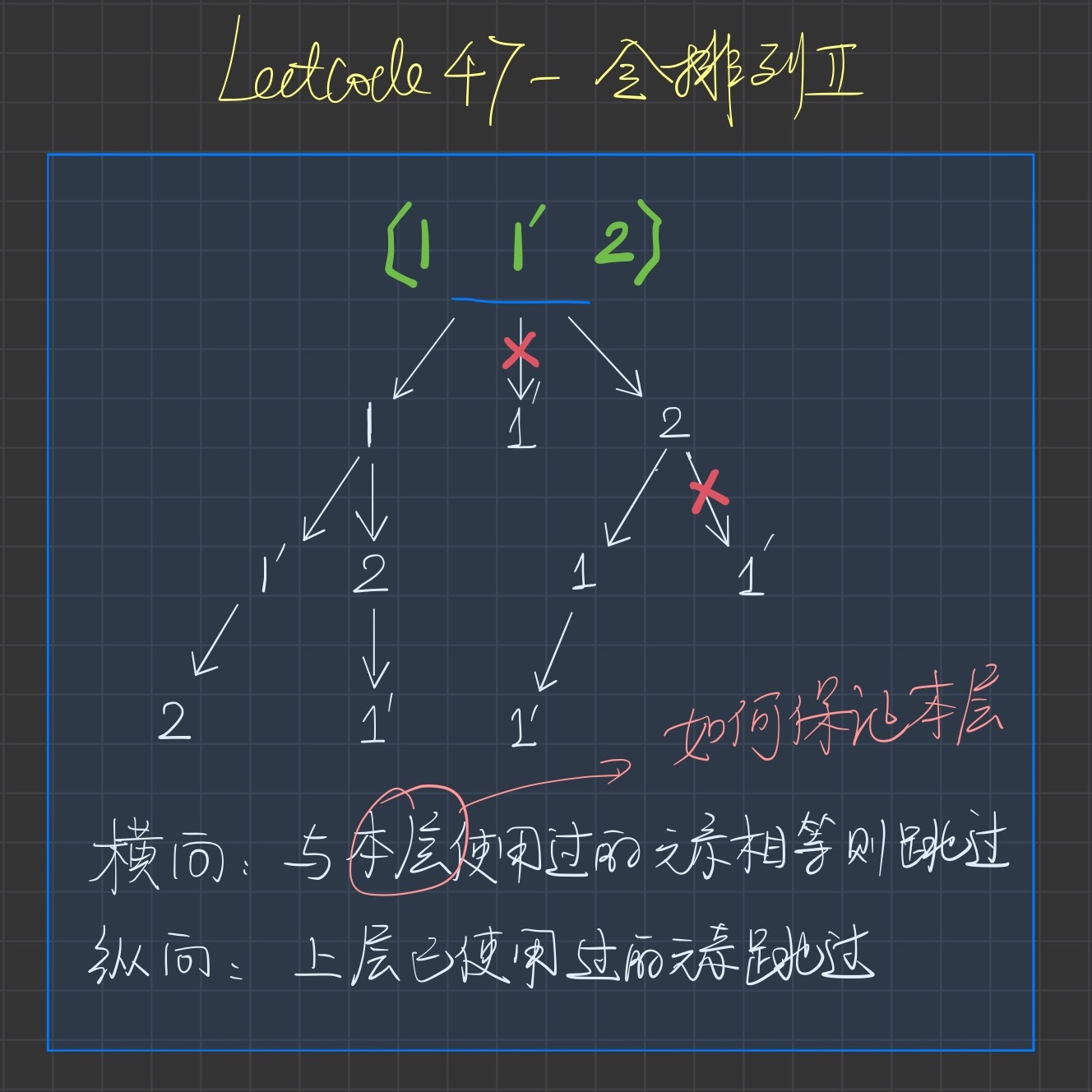图解思路

代码
class Solution {
public List<List<Integer>> permuteUnique(int[] nums) {
List<List<Integer>> res = new ArrayList();
Deque<Integer> path = new ArrayDeque<>();
Arrays.sort(nums);
boolean[] used = new boolean[nums.length];
dfs(nums, used, 0, res, path);
return res;
}
public void dfs(int[] c, boolean[] used, int level, List<List<Integer>> res, Deque<Integer> path){
if(level == c.length){
res.add(new ArrayList(path));
return;
}
for(int i = 0; i < c.length; i++){
//横向剪枝, 如何保证本层已经使用过的元素被剪枝呢? !used[i-1]很关键
//!used[i-1]含义是:以第i-1位为根节点的子树刚生成结束,从而保证c[i],c[i-1]在同一层
if(i > 0 && c[i] == c[i-1] && !used[i-1]) continue;
//纵向剪枝
if(used[i]) continue;
path.addLast(c[i]);
used[i] = true;
dfs(c, used, level+1, res, path);
used[i] = false;
path.removeLast();
}
}
}
dfs二刷20200711
class Solution {
List<List<Integer>> res = new ArrayList();
Stack<Integer> path = new Stack();
boolean[] used;
public List<List<Integer>> permuteUnique(int[] nums) {
used = new boolean[nums.length];
//排个序, 确保枚举时的顺序
Arrays.sort(nums);
dfs(nums);
return res;
}
public void dfs(int[] c){
if(path.size() == c.length){
res.add(new ArrayList(path));
return;
}
//枚举每一个位置u, 要保证顺序
for(int i = 0; i < c.length; i++){
//used[i-1]记录的是 第i-1个数 在深层刚刚被使用过
if(i > 0 && c[i] == c[i-1] && used[i-1]) continue;
if(!used[i]){
path.push(c[i]);
used[i] = true;
dfs(c);
used[i] = false;
path.pop();
}
}
}
}

